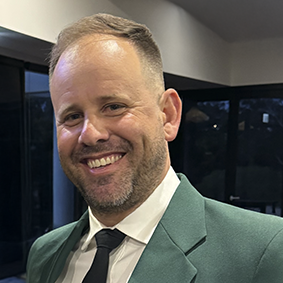Low Doc Home Loans Alternative Income Verification
Self-employed? Business owner? Limited documentation? We help you secure home loans with minimal paperwork. Compare 83 lenders with flexible income assessment policies.
What Are Low Doc Home Loans?
Low doc (low documentation) loans are designed for borrowers who can't provide traditional income verification like payslips or tax returns. Instead, lenders accept alternative documentation to prove your income and serviceability.
Traditional vs Low Doc Loans
📄 Traditional Full Doc Loans
- Payslips (last 3 months)
- Tax returns (2 years)
- Tax assessments (2 years)
- Employment contracts
- Employer verification
- Lower interest rates
- Higher LVR options (95%)
📋 Low Doc Loans
- 12 months bank statements OR
- 6-12 months BAS statements OR
- Accountant's letter/declaration OR
- Business financial statements
- ABN (12+ months old)
- Slightly higher rates (+0.3-1%)
- Typically max 80% LVR
Who Qualifies for Low Doc Loans?
Self-Employed Business Owners
Sole traders, partnerships, company directors with ABN 12+ months old. Can't provide payslips but have consistent business income.
Contractors & Freelancers
Independent contractors, consultants, freelancers with ABN earning through multiple clients or projects.
High Net Worth Individuals
Investors with substantial assets but complex tax structures minimizing taxable income.
Small Business Owners
Retail, hospitality, trades business owners who declare minimal personal income but have strong cash flow.
Creative Professionals
Artists, musicians, content creators with irregular income streams from multiple sources.
Foreign Income Earners
Australian residents earning overseas income without Australian tax returns.
How Lenders Verify Your Income
Different lenders accept different forms of documentation. We'll match you with lenders who suit your documentation situation.
Bank Statements (12 Months)
Most Common Method: Provide 12 months of business bank statements showing regular deposits and healthy cash flow.
✓ What Lenders Look For:
- Consistent monthly deposits
- Healthy closing balances
- Business-related transactions
- No excessive dishonours
- Stable or growing income trend
📊 Calculation Method:
- Total deposits over 12 months
- Minus irregular one-off deposits
- Average monthly income calculated
- Some lenders apply % loading
- Expenses deducted conservatively
BAS Statements (6-12 Months)
For GST Registered Businesses: Provide Business Activity Statements lodged with the ATO showing your business turnover.
✓ Requirements:
- 6-12 months of BAS statements
- Lodged with ATO (not just prepared)
- Consistent quarterly turnover
- ABN active 12+ months
- GST registered business
📊 How It Works:
- Lenders review G1 (total sales)
- Calculate average quarterly income
- Apply industry expense ratios
- May require accountant letter too
- Stronger for established businesses
Accountant's Letter / Declaration
Professional Declaration: Your accountant provides a letter declaring your business income and financial position.
✓ What's Included:
- Accountant's professional letterhead
- Declaration of your income
- Business tenure confirmation
- Future income projections
- Accountant's qualifications (CPA/CA)
📋 Lender Requirements:
- Accountant must be qualified (CPA/CA)
- Usually requires supporting docs too
- Not all lenders accept this method
- Stronger with 2+ years business
- May verify with accountant directly
Business Financial Statements
For Established Businesses: Provide profit & loss statements and balance sheets prepared by your accountant.
✓ Documents Needed:
- Profit & loss statement (1-2 years)
- Balance sheet
- Prepared by accountant
- Shows business profitability
- Assets and liabilities
💡 Best For:
- Established businesses (2+ years)
- Companies and partnerships
- Higher loan amounts ($500K+)
- More complex structures
- Prime/near-prime lenders
Low Doc Borrowing Capacity Examples
Low doc borrowing capacity depends on your declared income, deposit size, and lender policies. Here are typical scenarios.
Sole Trader - Tradie
2 years trading, bank statements
- ✓Total property value: $700K
- ✓LVR: 80%
- ✓Interest rate: ~6.5%
- ✓Documentation: Bank statements
Small Business Owner
5 years trading, BAS + accountant letter
- ✓Total property value: $1M
- ✓LVR: 80%
- ✓Interest rate: ~6.3%
- ✓Documentation: BAS + letter
High Net Worth Investor
Property portfolio, minimal tax returns
- ✓Total property value: $1.6M
- ✓LVR: 80%
- ✓Interest rate: ~6.2%
- ✓Private/specialist lender
Note: Low doc borrowing capacity is typically 10-20% lower than full doc due to higher risk loading. Having 20%+ deposit and 2+ years trading history significantly improves your capacity and rates.
Low Doc Loans: Pros & Cons
Understanding the trade-offs helps you make an informed decision.
Advantages
- Minimal paperwork: No need for 2 years tax returns or payslips
- Faster approval: Less documentation = quicker turnaround
- Privacy: Don't need to disclose full financial details
- Access for self-employed: Opens homeownership to business owners
- Declare optimal income: Choose income level that suits your needs
- Flexible structures: Can borrow in company/trust names
- New businesses welcome: Some lenders accept 12 months ABN
Considerations
- Higher interest rates: Typically 0.3-1% above standard rates
- Lower LVR limits: Usually maximum 80% LVR (need 20% deposit)
- Reduced borrowing capacity: 10-20% less than full doc
- Fewer lenders: Not all lenders offer low doc products
- Higher fees: Application fees may be higher
- ABN requirement: Need established ABN (usually 12+ months)
- Deposit requirements: Genuine savings or equity needed
Low Doc Loan FAQs
Do I need an ABN for a low doc loan?
Yes, most lenders require an active ABN that's been registered for at least 12 months. This proves you're legitimately self-employed or running a business. Some specialist lenders may accept 6 months ABN history, but 12+ months gives you access to better rates and more lenders. If you're a brand new business (under 12 months), full doc loans with alternative income verification may be a better option.
How much higher are low doc loan interest rates?
Low doc rates are typically 0.3-1% higher than equivalent full doc loans. The exact premium depends on your LVR, loan amount, deposit size, and business tenure. For example, if standard rates are 6.0%, low doc might be 6.4-6.8%. However, with a 30%+ deposit and established business (3+ years), the gap narrows. We compare 83 lenders to find you the most competitive low doc rates available.
Can I get a low doc loan with only 10% deposit?
It's very difficult. Most low doc lenders require a minimum 20% deposit (80% LVR). A few specialist lenders may go to 85-90% LVR, but you'll face significantly higher interest rates and strict criteria. If you have less than 20% deposit, consider whether you can provide full documentation instead—this gives you access to low deposit programs with LMI. Alternatively, using equity from an existing property can help you avoid needing cash savings.
What if my business is only 6 months old?
Most low doc lenders require 12 months minimum ABN history. With only 6 months, your options are limited to specialist lenders with higher rates, or you may need to wait until you reach 12 months. However, if you were previously employed in the same industry before starting your business, some lenders may accept a combination of payslips + business income. We can explore whether treating you as a contractor with contract income would work better than low doc.
Can I use low doc for investment properties?
Yes, absolutely. In fact, many low doc loans are used for investment properties by business owners building their property portfolios. Investment low doc loans follow the same documentation requirements (bank statements, BAS, etc.) but lenders will also assess the rental income from the investment property. Expect slightly higher rates for investment low doc compared to owner-occupied low doc. Tax benefits from the investment may offset the higher interest costs.
Do I need an accountant for a low doc loan?
Not always, but it helps significantly. If you're using bank statements alone, you may not need an accountant. However, if you want to use BAS statements, an accountant's letter, or financial statements, you'll need a qualified accountant (CPA or CA). Having an accountant also improves your credibility with lenders and may result in better rates. If you don't have an accountant, we can refer you to mortgage-savvy accountants who understand lender requirements.
What's the maximum I can borrow with low doc?
There's no set maximum, but borrowing capacity is typically 10-20% lower than full doc loans due to conservative income assessment. Most low doc lenders will lend up to 80% LVR. For example, if you can service a $700K loan on full doc, you might qualify for $560-630K on low doc. High net worth individuals with substantial assets and deposits can access $2M+ low doc loans through specialist private lenders. Your actual capacity depends on declared income, deposit, existing debts, and lender policies.
Can I refinance to a low doc loan?
Yes, refinancing to low doc is common, especially if your employment situation has changed (went from employee to self-employed). If you've built up equity in your home and now run a business, low doc refinancing lets you access better rates or release equity without providing tax returns. You'll need to meet current low doc criteria (ABN, deposit/equity requirements, etc.). Refinancing from a high-rate low doc loan to a competitive low doc loan with a better lender can also save thousands per year.
How We Help Low Doc Borrowers
We specialize in low doc lending and know which lenders have the best policies, rates, and approval criteria for self-employed borrowers.
Lender Matching
Not all lenders offer low doc. We know which of our 83 lenders have competitive low doc products and which documentation they prefer.
Documentation Strategy
We'll advise which documentation method gives you the best chance of approval and highest borrowing capacity based on your business type.
Rate Negotiation
Low doc rates vary widely. We negotiate with lenders to minimize the rate premium you pay and find the most competitive low doc rates.
Income Optimization
We help you present your income in the best light, whether through bank statement analysis, BAS structuring, or accountant declarations.
Fast Turnaround
Low doc should mean faster approval. We streamline the process and work with lenders who have efficient low doc assessment teams.
Exit Strategy Planning
Once you have 2 years of tax returns, we can refinance you to standard rates, saving thousands. We'll plan this transition from day one.
Ready to Apply for a Low Doc Loan?
Self-employed? Business owner? We'll find you the best low doc lenders with competitive rates and flexible documentation requirements. Compare 83 lenders in minutes.

